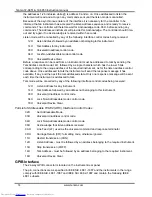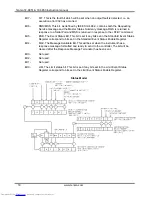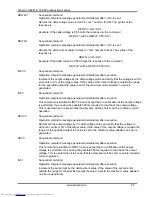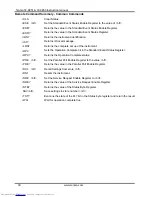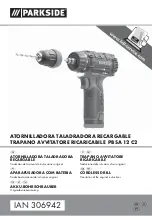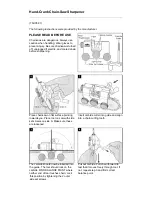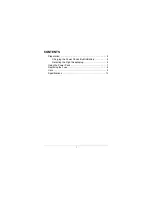
Tenma 72-6851 & 72-6853 Instruction manual
∗
ESE?
Sequential command.
Operation complete message generated immediately after <rmt> is sent.
Returns the value in the Standard Event Status Enable Register in <nr1> numeric format.
The syntax of the response is:
<nr1><rmt>
Example.
If the Standard Event Status Enable Register contains 01000001b
the response to
∗
ESE? will be 65<rmt>.
∗
ESR?
Sequential command.
Operation complete message generated immediately after <rmt> is sent.
Returns the value in the Standard Event Status Register in <nr1> numeric format. The
register is then cleared. The syntax of the response is:
<nr1><rmt>
Example.
If the Standard Event Status Register contains 01000001b the response
to
∗
ESR? will be 65<rmt>.
∗
IDN?
Sequential command.
Operation complete message generated immediately after <rmt> is sent.
Returns the instrument identification. The exact response is determined by the instrument
configuration and is of the form
<NAME>,<model>P,0,<version><rmt>
where <NAME> is the manufacturer's name, <MODEL> defines the type of instrument and
<VERSION> is the revision level of the software installed.
∗
IST?
Sequential command.
Operation complete message generated immediately after <rmt> is sent.
Returns
ist
local message as defined by IEEE Std. 488.2. The syntax of the response is
0<rmt>
if the local
ist
message is false or
1<rmt>
if the local
ist
message is true.
∗
LRN?
Sequential command.
Operation complete message generated immediately after <rmt> is sent.
Returns the complete set up of the instrument as a character data block. The block
contains a series of commands, separated by semi-colons, which specify the complete
instrument set up and may thus be returned to the instrument to re-install the set up.
The syntax of the response is
LRN #0<Indefinite Length Binary Block data><rmt>
The size of the character data block is instrument type dependent.
The settings in the instrument are not affected by execution of the
∗
LRN? command.
22
www.tenma.com
electronic components distributor







